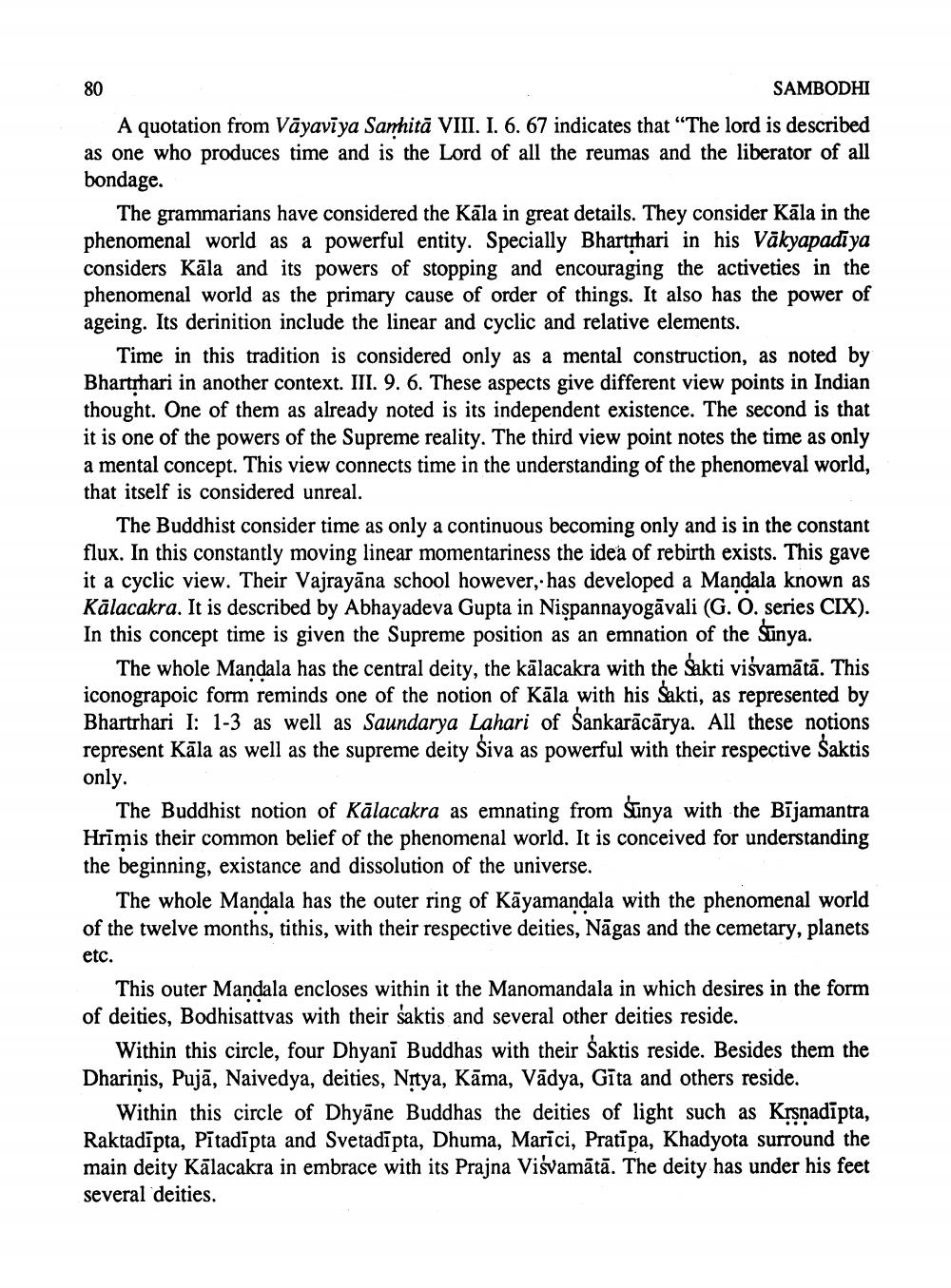________________
80
SAMBODHI
A quotation from Vāyaviya Sarhitā VIII. I. 6. 67 indicates that "The lord is described as one who produces time and is the Lord of all the reumas and the liberator of all bondage.
The grammarians have considered the Kāla in great details. They consider Kāla in the phenomenal world as a powerful entity. Specially Bhartrhari in his Vākyapadiya considers Kāla and its powers of stopping and encouraging the activeties in the phenomenal world as the primary cause of order of things. It also has the power of ageing. Its derinition include the linear and cyclic and relative elements.
Time in this tradition is considered only as a mental construction, as noted by Bhartrhari in another context. III. 9. 6. These aspects give different view points in Indian thought. One of them as already noted is its independent existence. The second is that it is one of the powers of the Supreme reality. The third view point notes the time as only a mental concept. This view connects time in the understanding of the phenomeval world, that itself is considered unreal.
The Buddhist consider time as only a continuous becoming only and is in the constant flux. In this constantly moving linear momentariness the idea of rebirth exists. it a cyclic view. Their Vajrayāna school however, has developed a Mandala known as Kālacakra. It is described by Abhayadeva Gupta in Nispannayogāvali (G. O. series CIX). In this concept time is given the Supreme position as an emnation of the Sunya.
The whole Mandala has the central deity, the kālacakra with the Sakti višvamātā. This iconograpoic form reminds one of the notion of Kāla with his Sakti, as represented by Bhartrhari I: 1-3 as well as Saundarya Lahari of Sankarācārya. All these notions represent Kāla as well as the supreme deity Siva as powerful with their respective Śaktis only.
The Buddhist notion of Kālacakra as emnating from Sunya with the Bījamantra Hrīmis their common belief of the phenomenal world. It is conceived for understanding the beginning, existance and dissolution of the universe.
The whole Mandala has the outer ring of Kāyamandala with the phenomenal world of the twelve months, tithis, with their respective deities, Nāgas and the cemetary, planets etc.
This outer Mandala encloses within it the Manomandala in which desires in the form of deities, Bodhisattvas with their saktis and several other deities reside.
Within this circle, four Dhyani Buddhas with their Šaktis reside. Besides them the Dharinis, Pujā, Naivedya, deities, Nitya, Kāma, Vädya, Gīta and others reside.
Within this circle of Dhyāne Buddhas the deities of light such as Krsnadīpta, Raktadīpta, Pītadīpta and Svetadīpta, Dhuma, Marici, Pratīpa, Khadyota surround the main deity Kālacakra in embrace with its Prajna Visvamātā. The deity has under his feet several deities.




